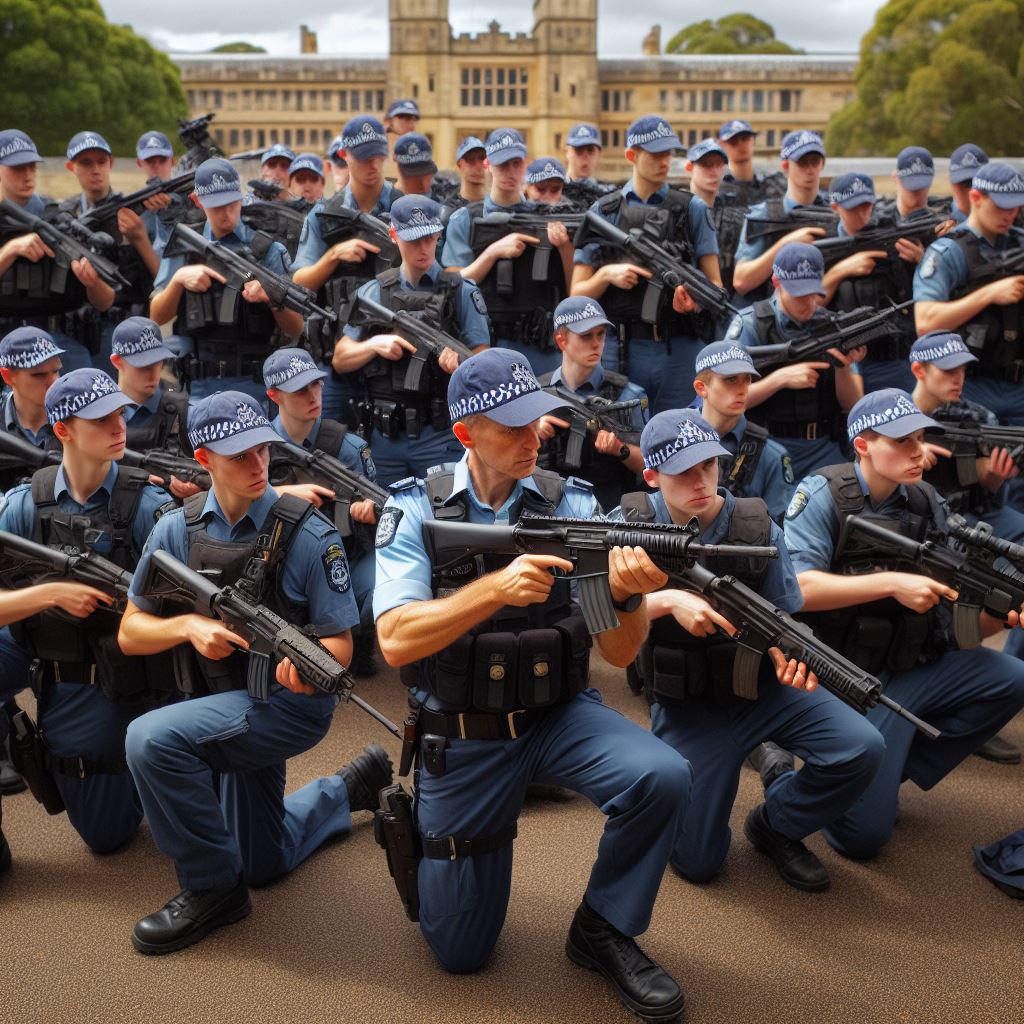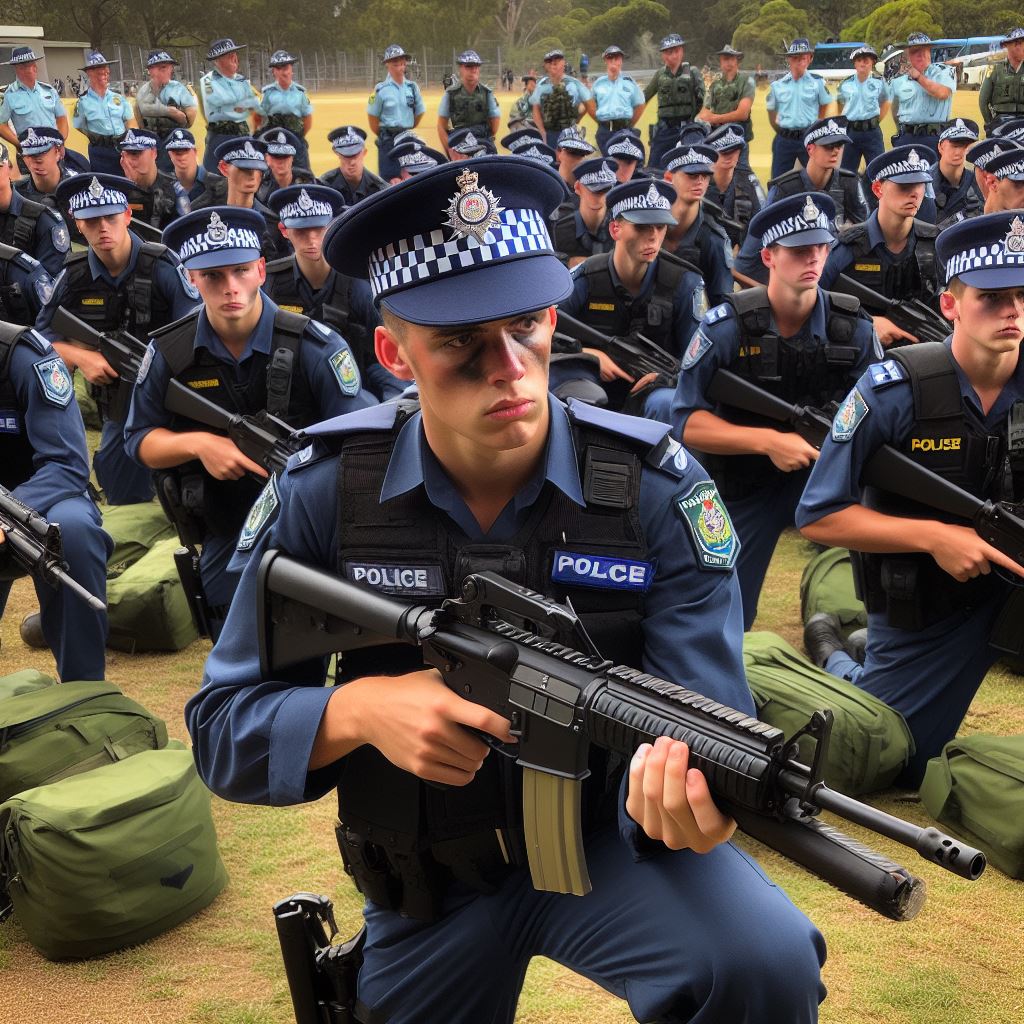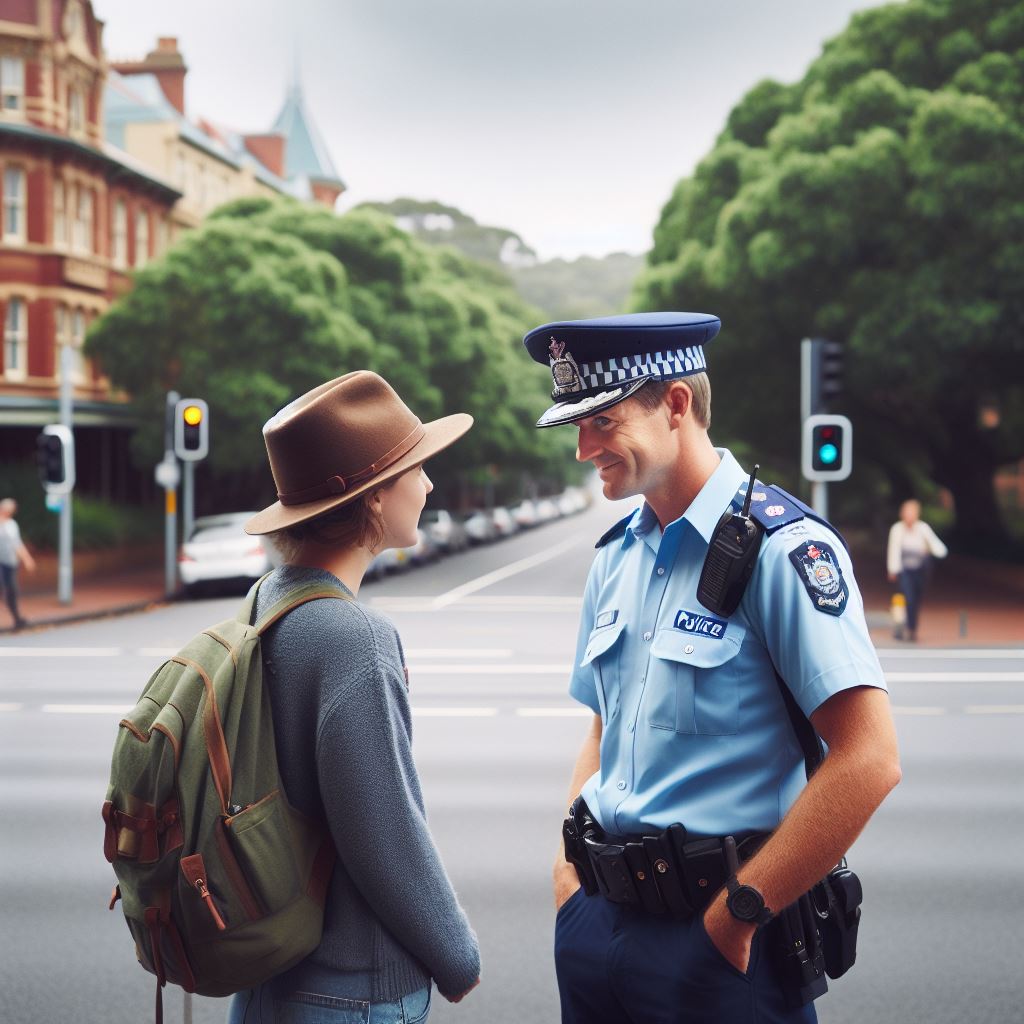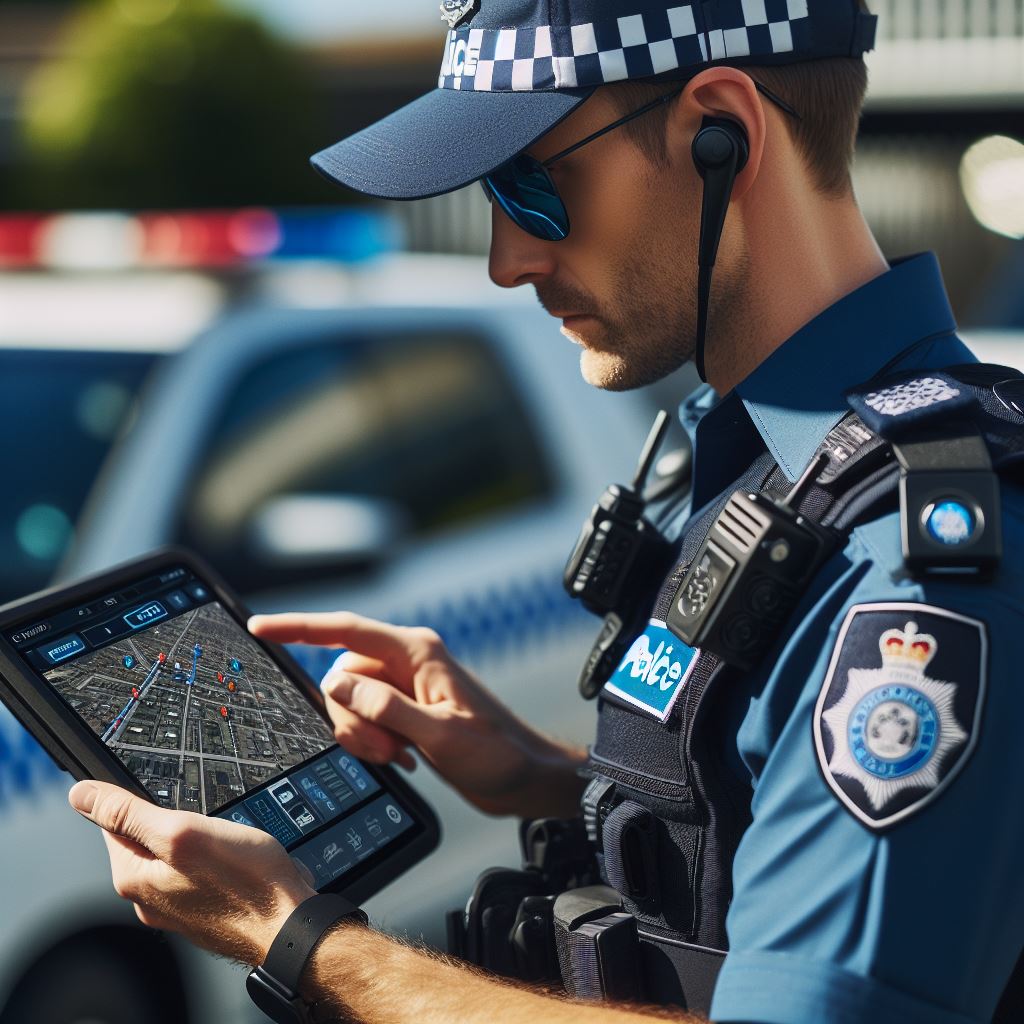Introduction
- The Australian Police Force plays a crucial role in maintaining law and order in the country.
- Understanding ranks in the police force is essential for comprehending the hierarchy and responsibilities.
- The purpose of this blog post is to provide an in-depth understanding of the ranks in the Australian Police Force.
The Australian Police Force – Safeguarding Law and Order
The Australian Police Force, consisting of federal, state, and territory police agencies, efficiently enforces laws across the country. Each agency has its specific jurisdiction, but they all work towards maintaining peace and ensuring the safety of citizens.
The Importance of Understanding Ranks in the Police Force
It is vital to grasp the hierarchical structure of the police force to comprehend its functioning accurately. Ranks determine the chain of command and the corresponding duties and responsibilities for each officer.
The blog post’s Purpose – Enhancing Knowledge and Awareness
This blog post aims to provide readers with a comprehensive understanding of the ranks within the Australian Police Force. By shedding light on the various ranks, readers will gain insight into the roles and responsibilities of each rank.
Through this informative post, readers will not only enhance their knowledge but also develop a deeper appreciation for the hard work and dedication shown by the officers serving in different ranks.
Classification of Ranks
Sworn Officers
- Commissioner – The highest-ranking officer responsible for overall strategic direction and management of the force.
- Deputy Commissioner – Assists the commissioner and may act as the commissioner in their absence.
- Assistant Commissioner – In charge of a major branch or division within the police force.
- Commander – Leads a geographical area, a specialized unit, or a branch within a region.
- Superintendent – Manages police activities within a designated area, usually a local government area or region.
- Inspector – Oversees the work of sergeants, senior constables, and constables within a district or specific area.
- Senior Sergeant – Functions as a senior operational supervisor and provides guidance to sergeants and constables.
- Sergeant – Acts as a team leader, providing direction to and supervising constables.
- Senior Constable – Experienced police officer responsible for carrying out general duties within a designated area.
- Constable – Entry-level rank responsible for carrying out general duties and maintaining law and order.
Non-Sworn Officers
- Civilian ranks and roles – Non-police personnel who perform administrative, technical, or professional roles within the police force.
- Support staff positions – Non-sworn personnel who provide support services such as clerical, IT, or forensic expertise.
- Non-sworn uniformed personnel – Officers who perform specialized roles but do not have the full powers of a sworn police officer.
“Hierarchy of Authority: Understanding Ranks in the Australian Police Force”
In the Australian Police Force, ranks are carefully classified to establish a clear hierarchy. Sworn officers are those who have taken an oath to perform their duties faithfully and protect the community.
The top tier in this classification is the Commissioner, who holds ultimate responsibility and authority over the force.
Assisting the Commissioner is the Deputy Commissioner, who acts as their right-hand and assumes their role in their absence.
Assistant Commissioners are assigned to major branches or divisions, ensuring effective management and coordination of specialized units.
Commanders, on the other hand, have leadership responsibilities over geographical areas, specialized units, or specific branches.
“Hierarchy in Policing: Roles and Responsibilities from Superintendents to Constables”
Superintendents focus on managing police activities within designated areas, such as local government regions. They are responsible for ensuring law and order, coordinating operations, and maintaining community safety.
Inspectors oversee the work of sergeants, senior constables, and constables within a district or specific area, ensuring compliance with regulations and protocols.
Senior Sergeants function as senior operational supervisors, providing guidance and support to sergeants and constables.
They play a critical role in maintaining discipline and efficiency within their teams. Sergeants, in turn, act as team leaders, providing direction and supervision to constables.
Senior Constables are experienced officers responsible for carrying out general duties within a designated area. They have acquired valuable skills and knowledge through their service.
Finally, Constables are entry-level officers who play a crucial role in maintaining law and order, responding to incidents, and ensuring public safety.
“Roles Beyond Sworn Officers: The Diverse Landscape of Australian Police Force Personnel”
Aside from sworn officers, the Australian Police Force also employs non-sworn officers who contribute to the effective functioning of the organization.
Civilian ranks and roles are assigned to personnel who perform administrative, technical, or professional duties in support of police operations. Their expertise is essential for the smooth running of the force.
Support staff positions are occupied by non-sworn personnel who provide support services ranging from clerical and IT support to forensic expertise.
These individuals play a vital role in facilitating police operations by offering specialized knowledge and assistance.
Lastly, non-sworn uniformed personnel perform specialized roles that do not grant them the full powers of a sworn police officer but are crucial for maintaining security and public safety.
In essence, the classification of ranks in the Australian Police Force ensures a well-structured hierarchy, enabling effective management and coordination of law enforcement efforts.
Sworn officers are assigned ranks based on their responsibilities and experience, while non-sworn officers contribute their specialized skills to support police operations.
Together, they work towards the common goal of protecting the community and maintaining law and order.
Rank Structure and Hierarchy
The rank structure
- Constable: The entry-level rank in the Australian Police Force, responsible for basic law enforcement duties.
- Senior Constable: Promoted after gaining experience as a Constable, with added responsibilities.
- Sergeant: Supervisory role, overseeing a team of Constables and Senior Constables, and handling more complex cases.
- Senior Sergeant: Experienced Sergeant, responsible for managing larger teams and providing guidance to junior ranks.
- Inspector: In charge of a police station, responsible for overseeing operations and ensuring law enforcement in their jurisdiction.
- Superintendent: Responsible for multiple police stations, strategic planning, and managing resources within their area of responsibility.
- Chief Superintendent: Senior position, overseeing a significant area and dealing with major incidents.
- Assistant Commissioner: Assists the Commissioner in decision-making, policy implementation, and providing strategic advice.
- Deputy Commissioner: Second in command, responsible for managing key divisions within the police force.
- Commissioner: The highest-ranking officer, responsible for overall leadership and strategic direction of the Australian Police Force.
Levels of authority and responsibilities for each rank
- Constable: Enforcing laws, conducting routine patrols, responding to emergencies, and filing incident reports.
- Senior Constable: Similar to the role of a Constable but with additional responsibilities, such as mentoring junior officers.
- Sergeant: Leading a team, managing resources, and coordinating investigations for criminal cases.
- Senior Sergeant: Providing guidance and supervision to junior officers and Sergeants, assisting in decision-making.
- Inspector: Overseeing a police station, ensuring adherence to policies and protocols, and managing personnel.
- Superintendent: Managing multiple police stations, strategic planning, allocating resources, and coordinating major operations.
- Chief Superintendent: Overseeing significant areas, handling high-profile cases, and collaborating with external agencies.
- Assistant Commissioner: Assisting the Commissioner in making key decisions, implementing policies, and leading large-scale initiatives.
- Deputy Commissioner: Managing divisions, providing expert advice, and assisting in formulating departmental strategies.
- Commissioner: Leading the entire police force, setting organizational goals, and representing the force at a national level.
Promotion process and criteria
- Eligibility: Officers must meet the minimum service requirement and demonstrate exceptional performance and potential.
- Application: Officers apply for promotion, submitting a detailed portfolio highlighting their achievements and capabilities.
- Assessment: Promotion boards assess the applications, considering performance, experience, leadership abilities, and potential for higher ranks.
- Examination: Candidates may undergo written and oral examinations that assess their knowledge, skills, and decision-making abilities.
- Interview: Shortlisted candidates are interviewed to gauge their suitability for higher ranks.
- Selection: Based on the assessment, examination results, and interview performance, candidates are selected for promotion.
- Promotion Announcement: Successful candidates are notified of their promotion, and their new rank and responsibilities are officially assigned.
The rank structure and hierarchy in the Australian Police Force play a crucial role in maintaining law and order. Each rank carries different levels of authority and responsibilities, with promotion being a significant milestone for officers.
The process involves a rigorous evaluation of an officer’s capabilities, experience, and potential for higher ranks. This ensures that only the most deserving individuals are entrusted with greater responsibilities.
The rank structure allows for effective coordination, efficient decision-making, and strategic planning within the police force, enabling them to protect and serve the community effectively.
Read: How to Become a Police Officer in Australia
Duties and Responsibilities of Different Ranks
Commissioner and Deputy Commissioner
- The Commissioner is responsible for leading and overseeing the entire police force.
- They set strategic goals, policies, and guidelines for the force.
- They make sure that the police force operates effectively and efficiently.
- The Deputy Commissioner assists the Commissioner in their duties and acts as a second-in-command.
- They are responsible for managing and coordinating various departments within the police force.
Assistant Commissioner and Commander
- The Assistant Commissioner is responsible for managing a specific area or department within the police force.
- They oversee the operations and ensure that all tasks are carried out effectively.
- They collaborate with other ranks to achieve organizational objectives.
- A Commander is responsible for leading a police station or district and ensuring safety and law enforcement.
- They supervise and manage their team of officers to maintain peace and order in their designated area.
Superintendent and Inspector
- A Superintendent oversees and manages a group of police stations or a district.
- They ensure that all activities and operations run smoothly within their jurisdiction.
- They are responsible for making important decisions and providing guidance to their subordinates.
- An Inspector is responsible for the day-to-day operations of a police station.
- They handle administrative tasks, monitor staff performance, and enforce regulations.
Senior Sergeant and Sergeant
- A Senior Sergeant provides leadership and guidance to a team of officers.
- They are responsible for ensuring the efficient delivery of policing services in their area.
- They handle investigations, oversee crime prevention activities, and maintain community relations.
- A Sergeant is responsible for supervising a small team of constables or officers.
- They ensure that their team performs their duties according to the law and police protocols.
Senior Constable and Constable
- A Senior Constable performs law enforcement duties and handles various tasks assigned by their superiors.
- They have advanced knowledge and experience in policing activities.
- They assist in investigations, maintain public order, and provide assistance to the community.
- A Constable is the entry-level rank in the police force.
- They carry out general duties such as patrolling, responding to calls, and enforcing laws.
With each rank in the Australian Police Force comes a specific set of duties and responsibilities. From the Commissioner and Deputy Commissioner to the Constables, each rank plays a crucial role in maintaining law and order in the country.
Your Personalized Career Strategy
Unlock your potential with tailored career consulting. Get clear, actionable steps designed for your success. Start now!
Get StartedRead: Day in the Life of an Aussie Police Officer
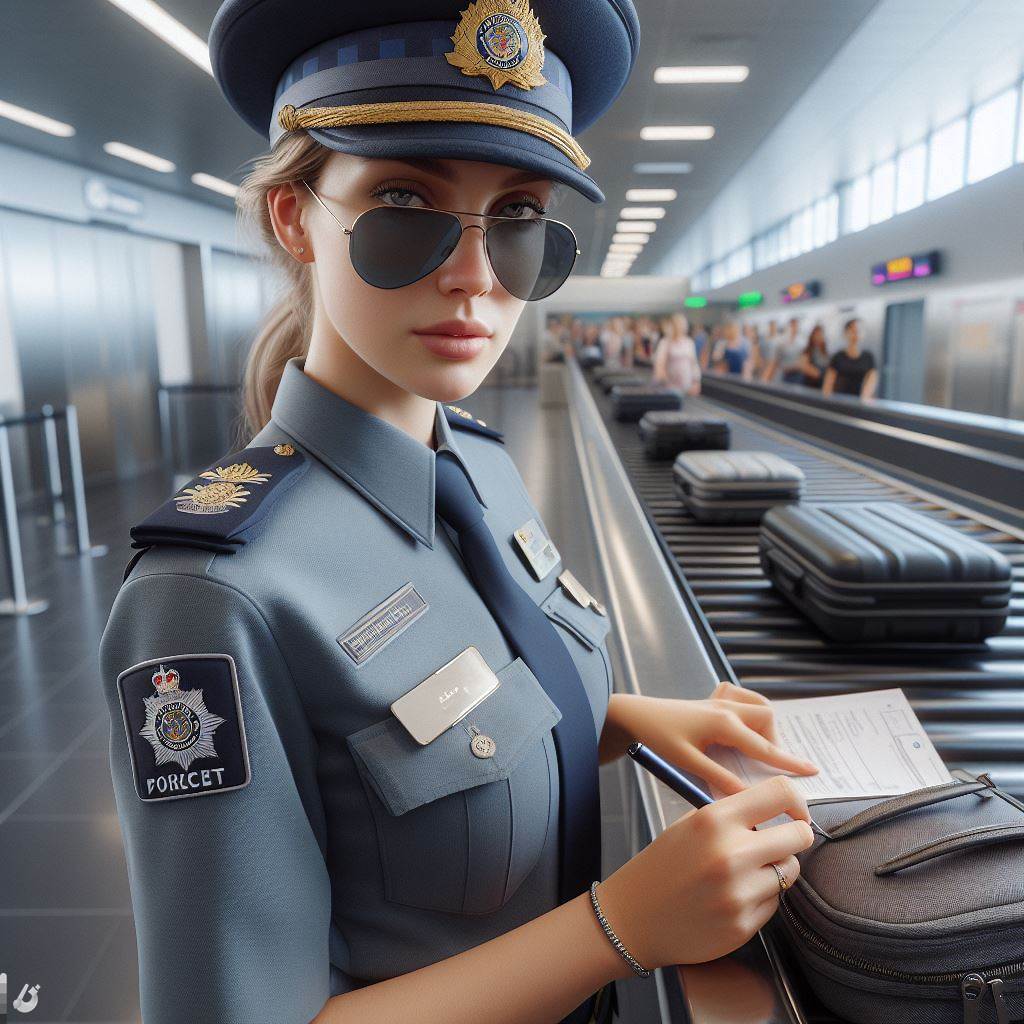
Training and Qualifications
Academic requirements and prerequisites
To join the Australian Police Force, candidates must meet certain academic requirements and prerequisites.
- Educational qualifications are essential, with a minimum requirement of completing year 12 or equivalent.
- Some states may require additional education, such as completing a diploma or bachelor’s degree in policing or criminology.
- Meeting the academic requirements does not guarantee entry, as candidates must also pass written tests, interviews, and physical assessments.
- Previous police experience or related work in community service can be advantageous but is not always required.
Training programs for different ranks
The Australian Police Force provides comprehensive training programs for officers at different ranks.
- Recruits undergo an entry-level training program that covers the fundamental skills and knowledge necessary for policing.
- This program includes classroom-based learning, physical training, and practical exercises to simulate real-life scenarios.
- As officers progress through the ranks, training becomes more specialized, focusing on leadership, investigative techniques, and legal frameworks.
- Training is often conducted at police academies or training colleges and can last several months to several years, depending on the rank.
Professional development opportunities
The Australian Police Force offers various professional development opportunities for its officers.
- Continuous learning is encouraged through in-service training programs that keep officers updated on new laws, techniques, and technologies.
- Advanced training courses are available for specialized roles, such as detectives, forensic experts, and negotiators.
- Officers can also pursue higher education while working, with some police departments offering study leave and financial assistance.
- Professional associations and networking events provide avenues for officers to enhance their skills and knowledge through collaborations and sharing best practices.
In short, joining the Australian Police Force requires meeting academic requirements and prerequisites. Training programs cater to different ranks, with specialized courses available for career progression.
Moreover, professional development opportunities ensure that officers stay abreast of new advancements in policing.
Read: Crisis Management in Diplomacy
See Related Content: Diplomatic Training: What to Expect
Learn More: How to Excel in Public Service Exams
Key Challenges at Different Ranks
Organizational Challenges
- Limited resources and funding can pose challenges for police officers at all ranks, affecting operations and effectiveness.
- Implementing and adapting to new policies and procedures can be a challenge, requiring constant training and coordination
- Maintaining discipline and ensuring adherence to organizational values and ethics can be a challenge, especially in large police forces
- Balancing workload and managing time effectively can be a challenge, as police officers often face demanding and unpredictable schedules.
Leadership and Management Responsibilities
- Senior officers face the challenge of managing and inspiring their teams, ensuring effective communication and coordination.
- Developing and implementing strategic plans and initiatives to address community needs and prevent crimes is a key responsibility.
- Navigating political and public pressure can be challenging for leaders, who must balance public expectations with operational realities.
- Building and maintaining positive relationships with community leaders, stakeholders, and other agencies is crucial for successful policing.
Dealing with Emergencies and Critical Incidents
- Police officers at all ranks must be prepared to respond to emergencies, such as natural disasters or terrorist attacks.
- Making quick decisions during high-pressure situations can be challenging, requiring critical thinking skills and effective coordination.
- Managing and coordinating resources during critical incidents can be complex, especially during large-scale events or criminal investigations.
- Supporting and managing the emotional well-being of personnel involved in traumatic incidents is a responsibility at all levels.
Maintaining Personal Safety and Well-being
- Police officers at all ranks face physical risks and dangers in their daily work, requiring ongoing training and safety protocols.
- Dealing with the psychological impact of the job, such as exposure to violence and trauma, can challenge officers’ mental well-being.
- Balancing work-life demands is a constant challenge, as police officers often work long hours and face high levels of stress.
- Developing and maintaining healthy coping mechanisms and seeking support is essential to ensure overall well-being in the police force.
In fact, the Australian police force faces various challenges at different ranks. These challenges range from organizational constraints to leadership responsibilities, dealing with emergencies, and maintaining personal safety and well-being.
Addressing these challenges requires ongoing training, effective communication, collaboration with the community, and a strong focus on the physical and mental well-being of officers.
By acknowledging and addressing these challenges, the Australian police force can continue to evolve and meet the needs of its communities.
Read: Diplomatic Immunity: The Basics
Career Progression in the Police Force
A career in the Australian Police Force offers various opportunities for advancement and specialization. Understanding the factors that influence career progression is essential for individuals aspiring to climb the ranks in this profession.
Advancement opportunities
- Police officers can advance their careers through promotion to higher ranks.
- Advancement often requires meeting specific eligibility criteria and undergoing a competitive selection process.
- Demonstrating competence, leadership skills, and exemplary performance can increase chances of promotion.
- Higher ranks in the police force come with increased responsibilities, authority, and higher salary packages.
- Advancement opportunities encourage officers to continually enhance their skills and knowledge to qualify for higher positions.
Specialization and lateral movement
- Specialization allows officers to focus on specific areas of policing they are passionate about.
- Specialized roles include forensic experts, detectives, drug squad officers, and counterterrorism specialists.
- Lateral movement refers to the ability to move between different units or departments within the police force.
- Officers can gain a diverse range of experiences and skills by switching units, enhancing their employability.
- Specialization and lateral movement also offer opportunities for personal and professional growth.
Factors influencing career progression
- Performance evaluations play a crucial role in determining career advancement in the police force.
- Officers need to consistently demonstrate their skills, professionalism, and commitment to their duties.
- Experience and on-the-job training contribute to an officer’s suitability for higher ranks.
- Education and continuous learning, such as obtaining relevant qualifications, can enhance career prospects.
- Networking and building strong professional relationships within the force can positively impact career progression.
- Availability of vacancies and organizational restructuring may create new opportunities for career advancement.
- Officers with exceptional leadership qualities and the ability to inspire and motivate their team members often excel.
- Personal attributes such as integrity, resilience, and a strong work ethic are valued in career progression.
- Demonstrating a commitment to community engagement and community policing can also be advantageous.
Essentially, a career in the Australian Police Force offers numerous advancement opportunities, specialization options, and factors that influence career progression.
By focusing on performance, specialization, and incorporating the necessary factors, individuals can strive for success and climb the ranks in the police force.
Delve into the Subject: Firefighting Dogs: Heroes on Four Paws
Conclusion
Recap of the importance of understanding ranks in the Australian Police Force
Understanding the ranks in the Australian Police Force is crucial for both aspiring officers and the general public. It allows individuals to comprehend the hierarchy and the chain of command within the force.
Stand Out with a Resume That Gets Results
Your career is worth more than a generic template. Let us craft a resume and cover letter that showcase your unique strengths and help you secure that dream job.
Get HiredBy understanding ranks, civilians can have a better understanding of who to approach when seeking assistance or reporting a crime. It enables them to communicate effectively and efficiently with the police force.
For individuals considering a career in law enforcement, knowing the different ranks provides insight into the progression and opportunities available within the Australian Police Force.
By comprehending the ranks, aspiring officers can set clear goals, understand the responsibilities associated with each rank, and prioritize their professional development accordingly.
This knowledge empowers them to make informed decisions about their career paths.
Final thoughts and encouragement to pursue a career in law enforcement
The Australian Police Force offers a rewarding and challenging career for those passionate about serving their communities and upholding the law.
By pursuing a career in law enforcement, individuals have the opportunity to make a significant impact on society, ensuring public safety, maintaining order, and promoting justice.
Although the path can be demanding, it presents numerous opportunities for personal growth, professional development, and job satisfaction.
Embarking on a career in law enforcement requires dedication, resilience, and a strong sense of integrity.
However, the rewards far outweigh the challenges, as every day presents new and unique opportunities to make a positive difference in the lives of others.
If you are passionate about maintaining law and order, protecting the community, and serving your country, a career in the Australian Police Force may be the perfect fit for you.
Take the initiative to explore the different ranks, understand the requirements, and start your journey towards a fulfilling and meaningful career in law enforcement.

